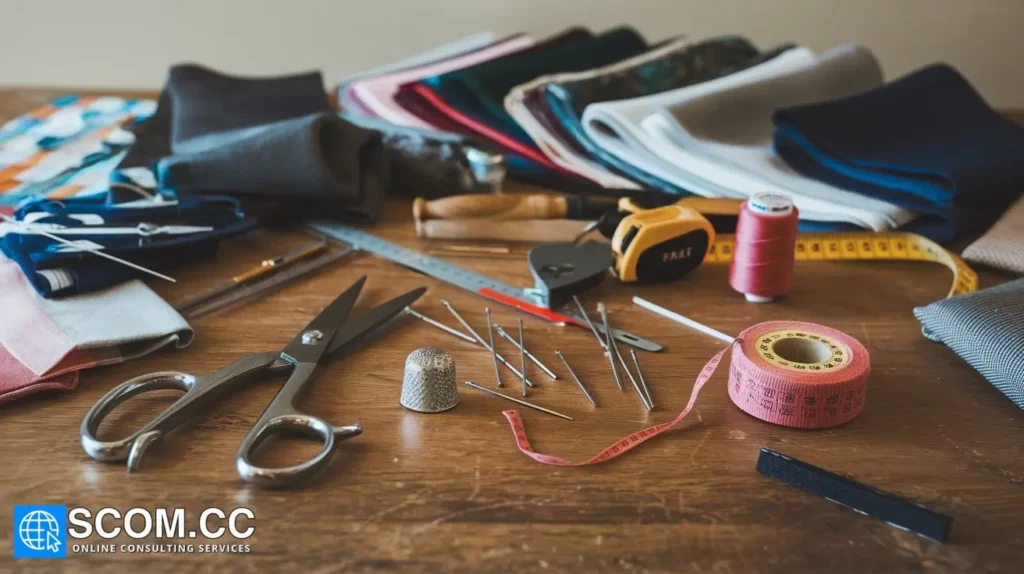Choosing the Right Thread and Notions for Tailoring

Choosing the Right Thread and Notions for Tailoring
In the intricate world of tailoring, selecting the right thread and notions is fundamental to achieving professional and long-lasting results. Whether you are a seasoned tailor or an enthusiastic beginner, understanding how to choose these essential materials can significantly impact the quality and durability of your garments. This guide provides a comprehensive overview of how to select the ideal thread and notions for your tailoring projects, ensuring optimal results every time.
1. Understanding Thread Types and Their Uses
The type of thread you use plays a crucial role in the overall quality of your sewing projects. Different types of threads are designed for specific purposes, and selecting the right one is essential for achieving the best results.
1.1 Types of Thread
- Cotton Thread: Known for its strength and durability, cotton thread is ideal for natural fabrics like cotton and linen. It is less elastic but provides a smooth finish, making it suitable for quilting and general sewing.
- Polyester Thread: Polyester thread is versatile and resilient, offering both strength and elasticity. It is suitable for a wide range of fabrics, including synthetics and blends, and is less prone to shrinkage and fading.
- Nylon Thread: Nylon thread is exceptionally strong and flexible, making it ideal for sewing heavy fabrics such as denim and leather. Its high tensile strength ensures that seams remain intact under stress.
- Silk Thread: For a luxurious finish, silk thread is unmatched. It is smooth and provides a subtle sheen, making it perfect for delicate fabrics and high-end garments.
1.2 Thread Weight and Thickness
Thread weight, often indicated by a number, determines the thickness of the thread. Higher numbers indicate finer threads, while lower numbers signify thicker threads. For example:
- Lightweight Threads (e.g., 50 wt): Suitable for delicate fabrics and fine seams.
- Medium Threads (e.g., 40 wt): Ideal for most general sewing and quilting projects.
- Heavyweight Threads (e.g., 30 wt and above): Best for heavy-duty sewing and construction work.
2. Choosing Notions for Tailoring
Notions are essential accessories and supplies that support the sewing process. Selecting the right notions can enhance the functionality and finish of your tailored garments.
2.1 Types of Notions
- Buttons: Available in various materials (plastic, metal, fabric-covered), buttons should be chosen based on the garment's style and function. Consider factors such as durability and aesthetic appeal.
- Zippers: Zippers come in different types (coil, invisible, metal) and lengths. Choose a zipper that matches the fabric and design of your garment. For invisible zippers, ensure they are compatible with the fabric to maintain a smooth appearance.
- Interfacing: Interfacing provides structure and support to fabrics. Options include fusible (which adheres with heat) and sew-in types. Select the weight and type of interfacing based on the fabric and desired stiffness.
- Elastic: Elastic is used to add stretch and flexibility to garments. Choose the appropriate width and type (braid, knit, or fold-over) depending on the garment's design and intended use.
- Piping and Trim: Piping and trim add decorative elements and finishings to garments. Select piping that complements the fabric and design, and choose trims that enhance the garment's overall aesthetic.
3. Fabric Compatibility with Thread and Notions
Selecting the right thread and notions is not only about personal preference but also about compatibility with the fabric you are working with. Here’s how to match them effectively:
3.1 Matching Thread to Fabric
- Natural Fabrics: Use cotton or cotton-blend threads for natural fibers like cotton and linen.
- Synthetic Fabrics: Opt for polyester or nylon threads that offer flexibility and durability.
- Delicate Fabrics: Silk thread provides a luxurious finish for fabrics like silk and satin.
3.2 Choosing Notions for Different Fabrics
- Heavy Fabrics: For denim or canvas, select robust buttons and zippers, and consider using a heavyweight interfacing.
- Light Fabrics: Use delicate buttons and invisible zippers for lightweight fabrics like chiffon or organza.
4. Tips for Selecting Quality Thread and Notions
Choosing high-quality thread and notions can make a significant difference in the outcome of your tailoring projects. Consider these tips:
4.1 Check for Consistency
Ensure the thread is consistent in thickness and texture. Irregularities can cause uneven stitching and affect the overall appearance of your garment.
4.2 Test Before Use
Before using a new thread or notion, test it on a scrap piece of fabric. This practice helps identify any potential issues with compatibility or performance.
4.3 Invest in Quality
Quality notions and threads may come at a higher price but offer better durability and performance. Investing in quality materials ensures that your garments maintain their appearance and function over time.
5. Storing Thread and Notions Properly
Proper storage of your thread and notions is essential for maintaining their condition and ensuring their longevity.
5.1 Thread Storage
Store thread in a cool, dry place away from direct sunlight. Use thread organizers or spools to prevent tangling and damage. Avoid exposing threads to excessive moisture, which can weaken them.
5.2 Notion Storage
Keep notions in labeled containers or organizers to avoid misplacement and damage. Ensure that buttons, zippers, and other small items are kept in a dry, dust-free environment to maintain their quality.
6. Conclusion
Selecting the right thread and notions is crucial for successful tailoring. By understanding the different types of threads, notions, and their compatibility with fabrics, you can ensure that your tailoring projects achieve professional results. Invest in high-quality materials, test before use, and store your supplies properly to maintain their performance and durability.

To explore more about tailoring, visit our Blog of Tailoring. If you have any questions or need assistance, go to our contact page. Additionally, you can find more information about tailoring and consulting at this tailoring and consulting portal.

Leave a Reply